cuba
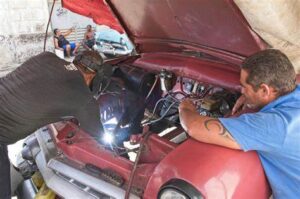
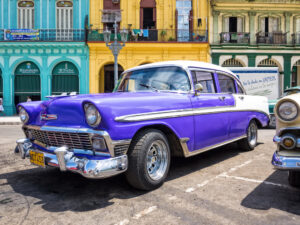 Cars are an important part of life these days, and really for many years now. So, what would you do if your ability to buy a car suddenly stopped…like hitting a wall? My guess is that you would start taking really good care of the car you had, because you wouldn’t know how long it would be before you could buy another car. Following the Cuban Revolution in 1959, Fidel Castro imposed a ban on the import of cars from abroad. This made it almost impossible for Cubans to get their hands on new cars, meaning that if they wanted a car, they had to make do and mend the vehicles that were already on the island. Basically, the Cuban people became a nation of mechanics. It was a necessity if they wanted to have a car.
Cars are an important part of life these days, and really for many years now. So, what would you do if your ability to buy a car suddenly stopped…like hitting a wall? My guess is that you would start taking really good care of the car you had, because you wouldn’t know how long it would be before you could buy another car. Following the Cuban Revolution in 1959, Fidel Castro imposed a ban on the import of cars from abroad. This made it almost impossible for Cubans to get their hands on new cars, meaning that if they wanted a car, they had to make do and mend the vehicles that were already on the island. Basically, the Cuban people became a nation of mechanics. It was a necessity if they wanted to have a car.
In a way I find it almost strange that Castro didn’t take away the cars they had, but I guess he wasn’t concerned about them driving, just that he didn’t want any imports from the United States. The problem was 
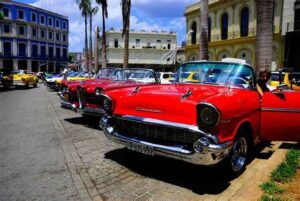 that there are no car manufacturers in Cuba, so the only way to buy a car was to import it. Of course, Castro and any of his chosen people could still import vehicles, just not from the United States. These kinds of things happen between governments, and as usual, it’s the people who suffer, not the government. In this case, I’m not so sure that “suffer” is the right word. Cuba has a huge collection of classic cars, because the people became, not only great mechanics, but they also became experts at restoring and caring for classic cars.
that there are no car manufacturers in Cuba, so the only way to buy a car was to import it. Of course, Castro and any of his chosen people could still import vehicles, just not from the United States. These kinds of things happen between governments, and as usual, it’s the people who suffer, not the government. In this case, I’m not so sure that “suffer” is the right word. Cuba has a huge collection of classic cars, because the people became, not only great mechanics, but they also became experts at restoring and caring for classic cars.
In 2014, after 55 years of not being able to, Cubans these days, are free to import foreign cars again. Unfortunately, the cost is so high that it makes imports impossible for all but the wealthiest members of society. Now you will see some newer cars on the roads, but they tend to be owned by taxi companies or car hire firms. 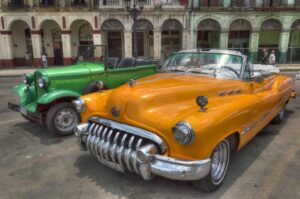
 The general population continues to drive to the old classics that they have driven for the last 55 years. While the cars in Cuba are all old, they do have value. All classic cars do, but those that are as well preserved as the ones in Cuba, might just have more value than their owners really know about…on the open market anyway. Whether they will ever be placed on the open market or not is a different story.
The general population continues to drive to the old classics that they have driven for the last 55 years. While the cars in Cuba are all old, they do have value. All classic cars do, but those that are as well preserved as the ones in Cuba, might just have more value than their owners really know about…on the open market anyway. Whether they will ever be placed on the open market or not is a different story.
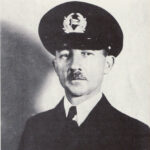
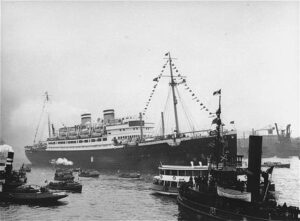 When Hitler’s reign of terror began, and the Jewish people soon realized that his goal was to wipe them from the face of the Earth, there was a mad scramble to get out of Germany and any other nation that was under Hitler’s control. Some people stayed, thinking that the war would be over soon, and many of those died. Others saw the writing on the wall, and started making plans to escape before it was too late.
When Hitler’s reign of terror began, and the Jewish people soon realized that his goal was to wipe them from the face of the Earth, there was a mad scramble to get out of Germany and any other nation that was under Hitler’s control. Some people stayed, thinking that the war would be over soon, and many of those died. Others saw the writing on the wall, and started making plans to escape before it was too late.
On May 27, 1939, a ship carrying 937 Jewish refugees was for the most part, turned away from Havana, Cuba, after admitting roughly 28 people onboard that had valid visas or travel documents. In my opinion, that was probably a blessing for those turned away, because as we all know, Cuba is not really they place that many people want to live. Nevertheless, it was a huge disappointment to the 909 Jewish refugees still on board. For seven days, the ship’s captain, Gustav Schröder, attempted to negotiate with Cuban officials, but they refused to comply. He then appealed to the United State and Canada for entry, and was also denied.
The SS Saint Louis had set sail on May 13, 1939 from Hamburg, Germany to Havana, Cuba. Six months earlier, 91 people were killed and Jewish homes, businesses, and synagogues were destroyed in what became known as the Kristallnacht massacre. It was becoming increasing clear that the Nazis were accelerating their efforts to exterminate Jews by arresting them and placing them in concentration camps. World War II and the formal implementation of The Final Solution were just months from beginning. Before they set sail, the refugees had applied for US visas, and planned to stay in Cuba until they could enter the United States legally. The Cuban government was not pleased with the planned stay in Cuba…even if it was temporary. Their impending arrival was greeted with hostility in Cuba before they even set sail. On May 8, there was a massive anti-Semitic demonstration in Havana. Right-wing newspapers claimed that the incoming immigrants were Communists.
The ship sailed closer to Florida, hoping to disembark there, but it was not permitted to dock. Some passengers attempted to cable President Franklin D Roosevelt asking for refuge, but he never responded. A State Department telegram stated that the asylum-seekers must “await their turns on the waiting list and qualify for and obtain immigration visas before they may be admissible into the United States.” As a last resort, the Saint Louis continued north to Canada, but it was rejected there, too. “No country could open its doors wide enough to take in the hundreds of thousands of Jewish people who want to leave Europe: the line must be drawn somewhere,” Frederick Blair, Canada’s director of immigration, said at the time.
After exhaustive appeals failed, the refugees were faced with no other options, the ship returned to Europe. On 
 June 17, the SS Saint Louis docked in Antwerp, Belgium. By the time they arrived, several Jewish organizations had secured entry visas for the refugees in Belgium, France, the Netherlands and Great Britain. The majority of the refugees who had traveled on the ship survived the Holocaust, but 254 died as the Nazis swept through Europe during Hitler’s horrible reign.
June 17, the SS Saint Louis docked in Antwerp, Belgium. By the time they arrived, several Jewish organizations had secured entry visas for the refugees in Belgium, France, the Netherlands and Great Britain. The majority of the refugees who had traveled on the ship survived the Holocaust, but 254 died as the Nazis swept through Europe during Hitler’s horrible reign.
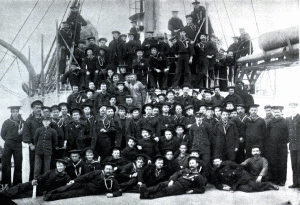 One of the first American battleships, the USS Maine weighed more than 6,000 tons and was built at a cost of more than $2 million. That was a lot of money back in 1884, when the USS Maine, several other new battleships, and other warships built by the United States Navy to modernize the fleet. The Maine was launched on November 18, 1889, and commissioned on September 17, 1895.
One of the first American battleships, the USS Maine weighed more than 6,000 tons and was built at a cost of more than $2 million. That was a lot of money back in 1884, when the USS Maine, several other new battleships, and other warships built by the United States Navy to modernize the fleet. The Maine was launched on November 18, 1889, and commissioned on September 17, 1895.
The ship was sent to Cuba on a friendly visit to protect the interests of Americans there after a rebellion against Spanish rule broke out in Havana in January, 1898. On February 15, 1898, while sitting in Cuba’s Havana harbor, the ship suddenly exploded, killing 260 of the fewer than 400 American crewmen onboard. The massive explosion of unknown origin, was the subject of an official U.S. Naval 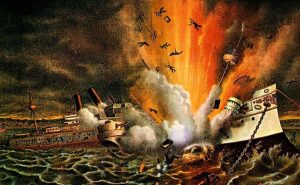 Court of Inquiry, which ruled in March that the ship was blown up by a mine, without directly placing the blame on Spain. The majority of Congressmen and of the American public felt that there was little doubt that Spain was responsible and they called for a declaration of war.
Court of Inquiry, which ruled in March that the ship was blown up by a mine, without directly placing the blame on Spain. The majority of Congressmen and of the American public felt that there was little doubt that Spain was responsible and they called for a declaration of war.
Diplomatic failures to resolve the USS Maine explosion, in addition to the indignation the United States felt over Spain’s brutal suppression of the Cuban rebellion and continued losses to American investment, led to the outbreak of the Spanish-American War in April 1898. The destruction of USS Maine and the loss of life that accompanied it, played a large part in the beginning of that war. As we have seen in history both before and after this incident, waking the sleeping giant that is the United States is never a good idea. We may be slow to enter a war, but when we get into one, we go into it full bore. When this giant goes to war, we go to win.
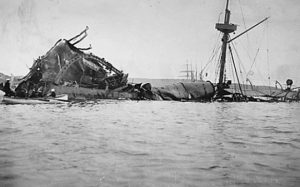
It took the United States only three months to decisively defeat the Spanish forces on land and sea. In August an armistice halted the fighting. On December 12, 1898, the Treaty of Paris was signed between the United States and Spain, officially ending the Spanish-American War and granting the United States its first overseas empire with the ceding of such former Spanish possessions as Puerto Rico, Guam, and the Philippines. In 1976, a team of American naval investigators concluded that the Maine explosion was likely caused by a fire that ignited its ammunition stocks, not by a Spanish mine or act of sabotage. I guess we will never know for sure.
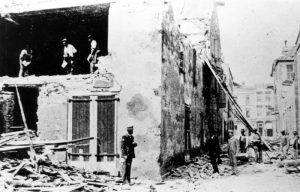 For some reason, there are certain areas on the United States, and the world, where earthquakes are…unexpected. There are just no real fault lines in these places, and no man-made reasons for it, like mining or drilling. So often people think they live in an area that is completely safe from an earthquake. Nevertheless, that does not mean that an earthquake can’t happen, as the people of Charleston, South Carolina found out on August 31, 1886.
For some reason, there are certain areas on the United States, and the world, where earthquakes are…unexpected. There are just no real fault lines in these places, and no man-made reasons for it, like mining or drilling. So often people think they live in an area that is completely safe from an earthquake. Nevertheless, that does not mean that an earthquake can’t happen, as the people of Charleston, South Carolina found out on August 31, 1886.
The first indicator that something strange was going on, came on August 27 and 28, when foreshocks were felt in Summerville, South Carolina, where my first cousin once removed, Stephanie Willard and her family live. While the tremors were odd, the people of the area didn’t think they were a warning for what was coming. Then, at 9:51pm on August 31, the rumbling began. The 7.6 magnitude quake was felt as far away as Boston, Chicago and Cuba. Buildings as far away as far away as Ohio and Alabama were damaged. But, it was Charleston, South Carolina, that took the biggest hit from the quake. Almost all of the buildings in town were seriously damaged. About 14,000 chimneys fell from the earthquake’s shaking. It caused multiple fires, and 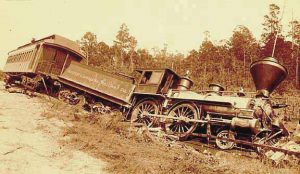 water lines and wells were ruptured. The total damage was in excess of $5.5 million, which would be about $112 million today.
water lines and wells were ruptured. The total damage was in excess of $5.5 million, which would be about $112 million today.
While that was a disaster in itself, it was the loss of life that was felt the worst. More that 100 people lost their lives that fateful day, and countless others were injured, in what is still the largest recorded earthquake in the history of the southeastern United States. The quake damaged as many as 2,000 buildings, including buildings as far away as central Alabama, central Ohio, eastern Kentucky, southern Virginia and western West Virginia. The strange part about this quake is the fact that there were no apparent surface cracks as a result of this tremor, railroad tracks were bent in all directions in some locations. Acres of land were liquefied. This quake remained a mystery for many years since there were no known underground faults for 60 miles in any direction. Then, as science and detection methods got better, scientists have recently uncovered a concealed fault along the coastal plains of Virginia and the Carolinas. While this fault is now known, scientists think that another quake of this magnitude remains highly 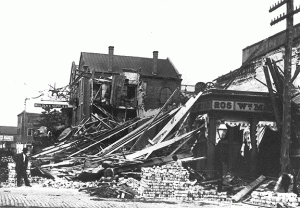 unlikely, though not impossible, in this location.
unlikely, though not impossible, in this location.
I guess I don’t quite understand that concept, except to say that if it is the only fault and has nothing to connect to, maybe there is less chance of a small tremor turning into a big quake, and maybe that is why they don’t expect another quake of that magnitude. Still, it is always good advise to realize that no place is immune to earthquakes. Oklahoma has found that out in recent years, as underground mining work has created quake situations that weren’t there before. It is still my hope that the Charleston area never has another quake like the one they had in 1886.
 When I come across a husband and wife, who both died on the same day, my curiosity kicks into overdrive. That just seems so unusual. Nevertheless, such was the case for my husband, Bob’s 4th great grandparents, Cloudsbury and Elizabeth Kirby, both of whom died on August 29, 1878 in Mount Ayr, Ringgold County, Iowa. At first, I wondered if it was an error, and I suppose it could be, but that is the information I have at this point, so that is what I have to go with.
When I come across a husband and wife, who both died on the same day, my curiosity kicks into overdrive. That just seems so unusual. Nevertheless, such was the case for my husband, Bob’s 4th great grandparents, Cloudsbury and Elizabeth Kirby, both of whom died on August 29, 1878 in Mount Ayr, Ringgold County, Iowa. At first, I wondered if it was an error, and I suppose it could be, but that is the information I have at this point, so that is what I have to go with.
My first thought was to check for disasters in the area, like tornados, fires, or floods, but I was unable to find anything that specifically happened in Mount Ayr, Iowa on August 29, 1878. Looking for these kinds of specific things can be a long and frustrating process, but I just can’t imagine too many situations where both halves of a couple would pass on the same day. I searched and found that there were tornadoes during that year, but nothing specifically on that day, so I doubt that a tornado is the culprit here.
When the possibility of a disaster was removed, I began to think about illness, so I looked up and epidemics in the area. That is when I came across a definite possibility…the Yellow Fever Epidemic of 1876 to 1878, which took many lives in the southern United States. Yellow fever, known historically as yellow jack or yellow plague is an acute viral disease, that is usually spread by the female mosquito. Symptoms include fever, chills, loss of appetite, nausea, muscle pains particularly in the back, and headaches. Many people improve after a few days, but when the symptoms return, they can cause kidney damage, liver failure (causing yellow skin, probably the reason for the name Yellow Fever), bleeding, and ultimately death. These days there is a vaccine against Yellow Fever and some countries require it for travelers. Other countries try to control the virus by killing off as many mosquitoes as possible. Nevertheless, Yellow Fever causes 200,000 infections and 30,000 deaths every year with nearly 90% of those occurring in Africa, these days. Since the 17th century, several major outbreaks have occurred in America, Africa, and Europe. In the 18th and 19th centuries yellow fever was seen as the most dangerous of infectious diseases.
I can’t say for sure that Yellow Fever is what took the lives of Bob’s 4th great grandparents, but with the epidemic that occurred during that time, I have to think that it is a possibility. I have looked at the lists of people know to have died of Yellow Fever during that epidemic, and did not see Cloudsbury and Elizabeth Kirby on the list, but the list was incomplete, with many people only listed as a number. At this time, unless more information somehow surfaces, I will probably never know for sure, but the epidemic, which apparently came in from Cuba caused 100,000 people to become ill, and killed 20,000 people, so it is likely that they were too busy, trying to help people get better, to keep really great records as to the names of the dead. I have to feel really sorry for people of that time. They didn’t really know what was causing the epidemic and would not have had a way to do much about it anyway, so many lives were lost. Thankfully for the people of this century, Yellow Fever can be prevented by vaccination, and it is usually found in Africa, so we don’t really see much of it here.

